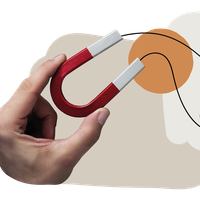Imagine, you’re in a work meeting – maybe in person, or virtually on Zoom or MS Teams or some other platform. And someone blurts out, “You’re so pushy with your ideas”. And whether they’re referring to you or another person in the meeting, how would this make you feel? And what would you do next?
That remark may not have been intended to be offensive, but perhaps it puts you on your guard. Whether they intended to offend or not, in that instance, the whole atmosphere could turn toxic. What happens next is critical if that meeting is to be productive and effective, one where people contribute, co-operate, and collaborate as a team. The meeting could easily spiral into “drama” with people’s buttons being pressed, feeling uncomfortable, ill at ease, and stressed.
Above is an example where I’ve found Clean Language processes to be so useful and effective. And useful not just when there are potential toxic situations, but also in everyday work and non-work contexts. It’s also particularly useful in developing a coaching culture, one which creates a climate where people feel free and able to give and receive feedback; to support, challenge and stretch each other’s thinking. They’re able to engage in conversations that develop each other and support a shared understanding of the organisation’s purpose.
What is Clean Language?
Clean Language is a term coined by David Grove, a New Zealand-born psychotherapist. It’s a process and practice for enquiry that gets to the heart of what someone is thinking behind the words they have expressed. This in turn can yield greater understanding – for themselves, for you and for others who may be witnessing the exchange.
During the 1980s, when Grove was working with trauma victims and patients, he noticed they would often spontaneously describe their symptoms in metaphor – that is, expressing one thing in terms of another. He also noticed, while studying session transcripts of famous and brilliant reflective psychotherapists such as Virginia Satir, Carl Rogers and Milton Erickson, that they would often ask questions which contained elements of their own hypotheses or presumptions, thus inadvertently influencing the patient’s response.
What Grove discovered was that when he honoured a patient’s traumatic memories and experience by repeating back some of their exact words and asking some simple questions with the least possible influence from himself as the therapist, patients could work through their problems and blocks and foster the change they wanted for themselves. Grove called his process “Clean Language” because his questions were “Clean” in that they did not interfere or contaminate the patients own experience.
Grove developed about twenty basic Clean questions, or question structures, with the two most common ones being:
“What kind of X is that X?”
“Is there anything else about that X?”
where X represents some of the exact words expressed.
While there are different levels of complexity to Clean Language, you can immediately begin to become a better and more active, and non-judgemental, listener by applying the key principles of Clean.
That is, what is critical in the Clean approach is not just the phrasing of the questions, but that you need to be paying exquisite attention, so that you hear the person’s exact words, and that you are able then to repeat a selection of their exact words as input into a Clean question. When you pay attention to someone, seeing and hearing them, they will feel it. That feeling of being listened to, of being seen and heard – without being judged – is the foundation for building a coaching culture.
An example
Coming back to our work meeting scenario at the start of this article, here’s an example of how using Clean Language questions can provide greater understanding about what’s going on for the person making the remark, and help to diffuse the situation while creating greater understanding for all:
Remark: "You’re so pushy with your ideas."
CL Response: "And what kind of pushy with ideas is that?"
Remark: "You talk, talk, talk, and don’t listen."
CL Response: "And talk, talk, talk, and don’t listen. And is there anything else about that don’t listen?"
Remark: " It’s like being disrespected."
CL Response: "And what kind of being disrespected?"
Remark: "It’s like not being in a team."
CL Response: "And how do you know that being in a team is happening?"
Remark: "Everyone contributing and hearing each other’s ideas."
CL Response: "And is hearing each other’s ideas happening now?"
The words in bold in the CL responses repeat back exact words spoken. You’ll notice that the Clean questions, or question structures, are in italics. Posing these “Clean” kind of questions invites the other to think further, without us interfering, influencing, or contaminating their thinking.
In conclusion
When you decide and learn to pay exquisite attention to someone and hear their exact words, you can begin to ask Clean(er) questions that invite and encourage the other to think more and to say more. And when they do that, we all discover and learn more and better understand each other. Doesn’t that sound like a great way to move towards a coaching culture at work, and home, too?
Doris Sew Hoy is an accredited executive coach and author of Trust Yourself First: Cultivating Self Awareness, Confidence and Resilience. This article is adapted from Chapter 6 in Trust Yourself First, which gives further information about Clean Language.
Find out more about how to create a coaching culture in your organization.



)